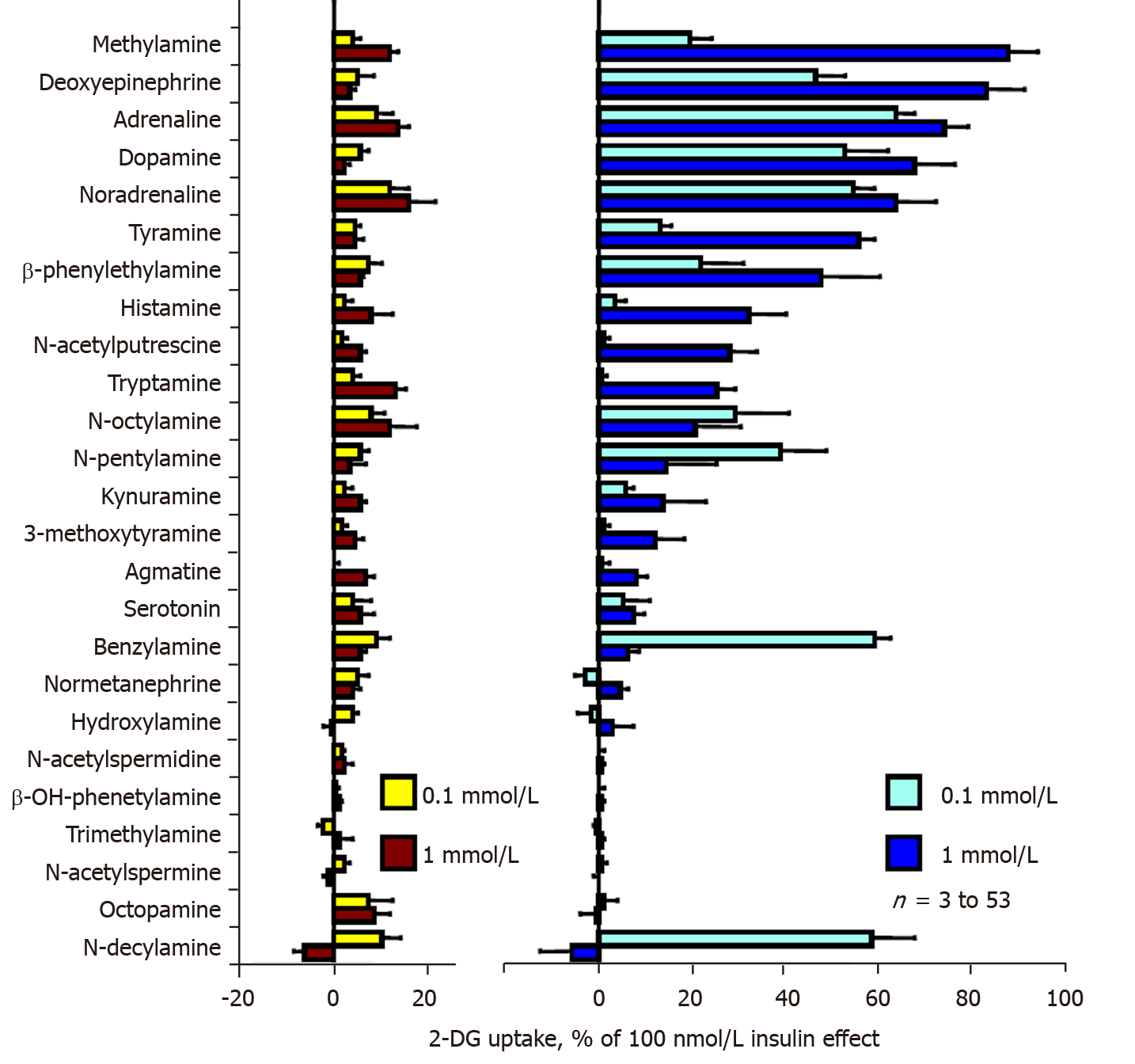Copyright
©The Author(s) 2020.
World J Diabetes. Dec 15, 2020; 11(12): 622-643
Published online Dec 15, 2020. doi: 10.4239/wjd.v11.i12.622
Published online Dec 15, 2020. doi: 10.4239/wjd.v11.i12.622
Figure 1 Screening of amines enhancing glucose transport in rat adipocytes under the influence of vanadate.
Suspensions of rat fat cells were incubated without (left) or with 100 µmol/L sodium orthovanadate (right) for 45 min in the presence of the indicated agents at 0.1 mmol/L (clearer columns) or 1 mmol/L (dark columns) just prior to the [3H]-2-deoxyglucose (2-DG) transport assay for 10 min. 2-DG uptake was expressed as the percentage of maximal stimulation by 100 nmol/L insulin, with baseline set at 0%. Rank order of the amines was based according to their effect at 1 mmol/L + 0.1 mmol/L vanadate. The mean ± SE from at least 3 determinations (for the agents almost inactive, at the bottom of the graph) up to 53 observations, for positive hits such as deoxyepinephrine, adrenaline (epinephrine), noradrenaline (norepinephrine), dopamine, methylamine, tyramine and benzylamine, with the seven most efficient amines being significant at P < 0.001. 2-DG: 2-Deoxyglucose.
- Citation: Fontaine J, Tavernier G, Morin N, Carpéné C. Vanadium-dependent activation of glucose transport in adipocytes by catecholamines is not mediated via adrenoceptor stimulation or monoamine oxidase activity. World J Diabetes 2020; 11(12): 622-643
- URL: https://www.wjgnet.com/1948-9358/full/v11/i12/622.htm
- DOI: https://dx.doi.org/10.4239/wjd.v11.i12.622









